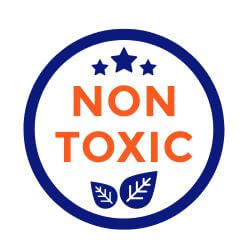When it comes to decorating your little one’s space, many parents focus on practicality and trends. However, much like adults, babies are also affected by the colors surrounding them. The psychology of color is a fascinating field that explores how different hues can influence emotions and behaviors. This article will delve into how color can affect your baby's mood, refreshing the nursery environment and, ultimately, making their space a happier place.
The Basics of Color Psychology
Color psychology is the study of how colors affect human behavior and emotions. It can guide choices not just in fashion and marketing but also in the nursery design. Babies absorb their surroundings quickly, and the colors you choose can stimulate their minds or calm their spirits.
Understanding Primary Colors
Primary colors—red, blue, and yellow—are foundational for infants. Each has unique effects:
- Red: Consistently tied to high energy and excitement, red can stimulate a baby's senses. This color can evoke passion and urgency but may also lead to overstimulation if overused.
- Blue: Often associated with calm and serenity, blue can help soothe a restless baby. It’s perfect for bedrooms and areas meant for relaxation.
- Yellow: Bright and cheerful, yellow can invoke feelings of happiness. However, too much yellow may lead to frustration. Balance is key!
Colors That Inspire Calm

When decorating your baby's room, especially around important furniture like a crib, a changing station, or a baby dresser, incorporating calming colors can aid in providing a serene environment. The right hues can also help with sleep routines, allowing your little one to drift off peacefully.
Soft Pastels and Neutrals
Pale shades like soft pinks, mint greens, light blues, and buttery yellows are great choices for creating a calming atmosphere. These subtler tones tend to be easier on the eyes and less likely to induce excitement. Neutral colors, such as creams and light grays, can also promote a tranquil space, making them ideal for areas where your baby will sleep or play.
The Impact of Bold Colors
While softer colors are excellent for relaxation, bold and vibrant colors can bring energy and excitement to a room. How can you strike the right balance when considering colors for your nursery wall, and nursery furniture?
Energy Boosting Hues
Colors like orange and bright red can stimulate activity and encourage play, making them perfect for a play corner. An orange accent or a vibrant red decor item could prompt joyous playtime without overwhelming the space.
- Orange: This color radiates enthusiasm and creativity, perfect for inspiring your baby’s mind.
- Bright Red: While vibrant and attention-grabbing, use sparingly to avoid overstimulation.
Creating a Harmonious Space

The goal of your nursery should reflect a balance between stimulating your baby's senses and providing soothing areas for rest. Consider the following tips when choosing colors for the various parts of your nursery:
Accent Walls
An accent wall can be an excellent way to introduce a bold color without overwhelming the room. For instance, you can position your baby’s dresser against one wall and paint it a vivid hue. This can attract attention while the remaining walls in softer tones serve to balance it out.
Mixing Textures and Patterns
Introducing varied textures and patterns can enrich your baby's sensorial experience. Use fabrics in different colors for cushions or soft toys, while keeping the large pieces like furniture in a solid and neutral color. This way, the room remains visually appealing without becoming chaotic.
Color Influence on Baby Development
The colors in your baby’s environment can have long-lasting effects on their development. Studies have shown that certain colors can affect mood and behavior. Here's how specific colors relate to developmental benefits:
- Green: Associated with nature, green can promote balance and healing, providing a serene backdrop.
- Purple: Often linked to creativity and imagination, slight touches of purple can inspire your baby to explore.
Choosing Colors for Different Activities
Each section of your nursery may serve different functions, and colors can be strategically chosen to optimize the experience:
Playtime Areas
Bright colors work wonderfully for play zones where you can engage your child. A playful palette can instill a sense of joy. Think about organizing toys and books around a vibrant space, encouraging exploration and fun.
Nap Zones
Calm colors are essential for nap zones. Consider painting these areas soothing hues to signal relaxation time.
Making Safe Color Choices
Safety is paramount when painting or decorating your baby’s nursery. Ensure the paints and materials used are non-toxic and free of harmful chemicals. Many brands now offer safe water-based paints specifically formulated for children’s rooms.
Testing Color Swatches
Before committing to a color, it's wise to test samples on the wall. Observe how the color looks at different times of the day and with changing light. This is also an excellent opportunity to visualize how it will harmonize with your nursery furniture pieces.
Engaging Your Baby's Senses
Engaging your baby's senses through colors can create a more enriching environment. Not only will the colors affect their mood, but they may also engage them in developmental learning. Here's how you can use color to your advantage:
- Colorful Toys: Incorporating colorful toys can help with developers’ cognitive skills.
- Color-Coded Organization: Use the color scheme around the nursery to sort and categorize toys and clothes in your baby dresser.
The Final Touch: Personalizing with Color
As you think about color, don’t forget personalization. Allow your baby's personality to shine through by adding custom color elements. Whether it’s a hand-painted sign with their name or personalized curtains, utilizing color that reflects your baby’s unique spirit can make the nursery truly yours.
Creating a Lasting Impression
Integrating thoughtful color choices into your baby’s nursery can create an emotionally supportive environment, significantly influencing their mood and development. When selected carefully, colors can infuse the space with warmth, comfort, and joy. Just be mindful of your choices, considering how different colors may impact their growth and well-being.
As early as they are, starting them off in a space that feels calm yet stimulating can set the tone for their experiences in the world. From their baby dresser to their playtime zones, color can nurture creativity while providing a sense of peace. Remember, creating an engaging atmosphere is not just about aesthetics; it can influence cognitive development and emotional health for your baby.
Now that you’re equipped with this knowledge, let your creativity flow as you transform your little one’s nursery into a vibrant haven! Happy decorating!








